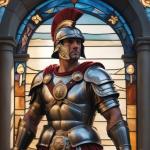One of the key moves made since the 17th century, Latour argues, is a distinction between modes of “representation.” In the laboratory Boyle is representing things before selected witnesses through scientific experiments, giving mute nature a voice through the scientist, while in politics Hobbes suggests that the Sovereign speaks for the citizens who have ceded authority to him. This separation of scientific representation and political is essential to the modern Constitution; it means that everyone “sees double,” equivocating on the word “representation” as it applies to science or politics.
And in the modern order, these two forms of representation depend on a separation and at the same time a hidden union: “Hobbes’s State is impotent without science and technology, but Hobbes speaks only of the representation of naked citizens; Boyle’s science is impotent without a precise delimitation of the religious, political, and scientific spheres, and that is why he makes such an effort to counteract Hobbes’s monism. They are like a pair of Founding Fathers, acting in concert to promote one and the same innovation in political theory: the representation of nonhumans belongs to science, but science is not allowed to appeal to politics; the representation of citizens belongs to politics, but politics is not allowed to have any relation to the nonhumans produced and mobilized by science and technology.”
Consistent with his thesis, Latour denies that moderns every actually separate signs and things in this fashion. Like it or not, deny it or not, we are not surrounded by “in-significant things” but by “sign-things,” products of nature-culture. But the fact that we THINK we are dealing only with things is an important belief of the tribe of modernists.
Another hint that sacramental theology – theory of signs – is at the heart of the formation of modernity.















